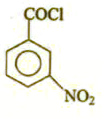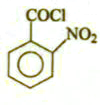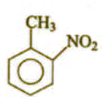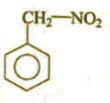A chloro compound(A) on reduction with Zn-Cu and ethanol give hydrocarbon (B) with 5 carbon atoms. When(A) is dissolved dry ether and treated with sodium metal it gave 2, 2, 5, 5 tetra methyl hexane. The treatment of A as A'C (in presence of alcoholic KCN)
The reaction of A with aq. KOH will preferably favour:
SN1 Mechanism
E1 Mechanism
SN2 Mechanism
E2 Mechanism
The correct Answer is:A
To solve the problem step-by-step, we need to analyze the information given about compound A and the reactions it undergoes.
Step 1: Identify Compound A
We know that compound A is a chloro compound that, when reduced with Zn-Cu and ethanol, gives a hydrocarbon (B) with 5 carbon atoms. The hydrocarbon formed must be a straight-chain alkane, likely pentane (C5H12).
Step 2: Analyze the Reaction with Sodium Metal
When compound A is treated with sodium metal in dry ether, it produces 2,2,5,5-tetramethylhexane. This suggests that A has a structure that allows for the formation of this product through a Wurtz reaction, which typically involves coupling of alkyl halides.
Step 3: Determine the Structure of A
Given that the product is 2,2,5,5-tetramethylhexane, we can deduce that compound A must have a branched structure that can lead to this product. A plausible structure for A could be 2-chloro-2-methylpentane (C5H11Cl), which would allow for the formation of the desired hydrocarbon through the coupling of two alkyl radicals.
Step 4: Reaction with Aqueous KOH
When compound A is treated with aqueous KOH, we need to consider the mechanism of the reaction. The chlorine atom (Cl) will leave, forming a carbocation. The stability of the carbocation will determine the pathway of the reaction:
1. SN1 Mechanism: The formation of a carbocation suggests that an SN1 mechanism is favored, especially since we have a tertiary carbocation from the structure of A.
2. Rearrangement: If the carbocation formed is stable, it may undergo rearrangement to form a more stable carbocation before the nucleophile (OH-) attacks.
Step 5: Final Product Formation
After the carbocation rearrangement, the hydroxide ion (OH-) from aqueous KOH will attack the carbocation, leading to the formation of an alcohol. The final product will be a tertiary alcohol due to the structure of compound A.
Conclusion
The reaction of compound A with aqueous KOH will preferably favor the formation of a tertiary alcohol through an SN1 mechanism.
We know that compound A is a chloro compound that, when reduced with Zn-Cu and ethanol, gives a hydrocarbon (B) with 5 carbon atoms. The hydrocarbon formed must be a straight-chain alkane, likely pentane (C5H12).
When compound A is treated with sodium metal in dry ether, it produces 2,2,5,5-tetramethylhexane. This suggests that A has a structure that allows for the formation of this product through a Wurtz reaction, which typically involves coupling of alkyl halides.
Given that the product is 2,2,5,5-tetramethylhexane, we can deduce that compound A must have a branched structure that can lead to this product. A plausible structure for A could be 2-chloro-2-methylpentane (C5H11Cl), which would allow for the formation of the desired hydrocarbon through the coupling of two alkyl radicals.
When compound A is treated with aqueous KOH, we need to consider the mechanism of the reaction. The chlorine atom (Cl) will leave, forming a carbocation. The stability of the carbocation will determine the pathway of the reaction:
2. Rearrangement: If the carbocation formed is stable, it may undergo rearrangement to form a more stable carbocation before the nucleophile (OH-) attacks.
After the carbocation rearrangement, the hydroxide ion (OH-) from aqueous KOH will attack the carbocation, leading to the formation of an alcohol. The final product will be a tertiary alcohol due to the structure of compound A.
The reaction of compound A with aqueous KOH will preferably favor the formation of a tertiary alcohol through an SN1 mechanism.
Topper's Solved these Questions
Similar Questions
A five C-atom hydrocarbon is formed by the reduction of a chloroderivative (A) of an alkane with Zn-Cu couple. (A) (A) is dissolved in dry ether and then treated with metallic sodium to give 2, 2, 5, 5-tetramethyl hexane. The IUPAC name of compound (A) is:
View SolutionChloro derivative of an organic compound 'X' on reduction with zinc-copper couple gave a hydrocarbon (C6H12). Ethereal solution of 'X' when heated with sodium gave 2,2,5, 5-tetramethylhexane. Identify the compound 'X'.
View Solution
Knowledge Check
- Question 1 - Select One
An alcohol (A) gives Lucas test within 5 min. 7.4 g of alcohol when treated with sodium metal liberates 1120 mL of H2 at STP. What will be alcohol (A)?
ACHCH2_3OHBCH3CH(OH)CH2CH3C(CH3)3OHDCH3CH(OH)CH2CH2CH3 - Question 2 - Select One
Compound A having molecular formula C7H7NO2 can undergo reduction with Sn + HCl. Treatment of A with KMnO4 gives a compound B (C7H5NO4) which has lower boiling point compared to its other isomer, B when treated with SOCl2 produces C.C when treated with CH2N2 produces D of molecular formula C8H5N3O3 . D when treated with Ag/H2O produces E.
Find out structure of C:A B
B C
C D
D
- Question 3 - Select One
Compound A having molecular formula C7H7NO2 can undergo reduction with Sn + HCl. Treatment of A with KMnO4 gives a compound B (C7H5NO4) which has lower boiling point compared to its other isomer, B when treated with SOCl2 produces C.C when treated with CH2N2 produces D of molecular formula C8H5N3O3 . D when treated with Ag/H2O produces E.
Find out structure of A:A B
B C
C D
D
An aliphatic unsaturated hydrocarbon (A) when treated with HgS∅H2SO4 yields a compound (B) having molecular formula C3H6O. (B) on oxidation with concentrated HNO3 gives two compounds (C) and (D). Compound (C) when treated with PCl5 gives compound (E). (E) when reacts with ethanol gives a sweet-smelling liquid (F). Compound (F) is also formed when (C) reacts with ethanol in the presence of concentrated H2SO4.
(i) Identify the compound A, B, C, D, E and F.
(ii) Give the chemical equation for the reaction of (C) with chlorine in the presence of red phosphorus and name the reaction.View SolutionCH3CO2C2H5 on reaction with sodium ethoxide in ethanol gives A, which on heating in the presence of acid gives B compound B is
View SolutionAn organic compound (A) C4H9Cl on reacting with aqueous KOH gives (B) and on reaction with alcoholic KOH gives (C ), which is also formed on passing the vapours of (B) over the heated copper. The compound (C ) readily decolourises bromine water. Ozonolysis of (C ) gives two compounds (D) and (E ). Compound (D) reacts with NH2OH to give (F) and compound (E ) reacts with NaOH to have an alcohol (G) and sodium salt (H) of an acid. (D) can also be prepared form propyne on treatment with water in the presence of Hg2+ and H2SO4. Identify (A) to (H) with proper reasoning.
View SolutionA certain compound 'A' has a molecular formula C5H11Br. It reacts with Mg metal in anhydrous ether to form compound B which upon hydrolysis gives n-pentane when compound A was reacted with na metal in dry ether gave 4,5- dimethyl octane. What is A B and draw their structures?
View SolutionCompound A having molecular formula C7H7NO2 can undergo reduction with Sn + HCl. Treatment of A with KMnO4 gives a compound B (C7H5NO4) which has lower boiling point compared to its other isomer, B when treated with SOCl2 produces C.C when treated with CH2N2 produces D of molecular formula C8H5N3O3 . D when treated with Ag/H2O produces E.
Find out structure of E :View Solution

